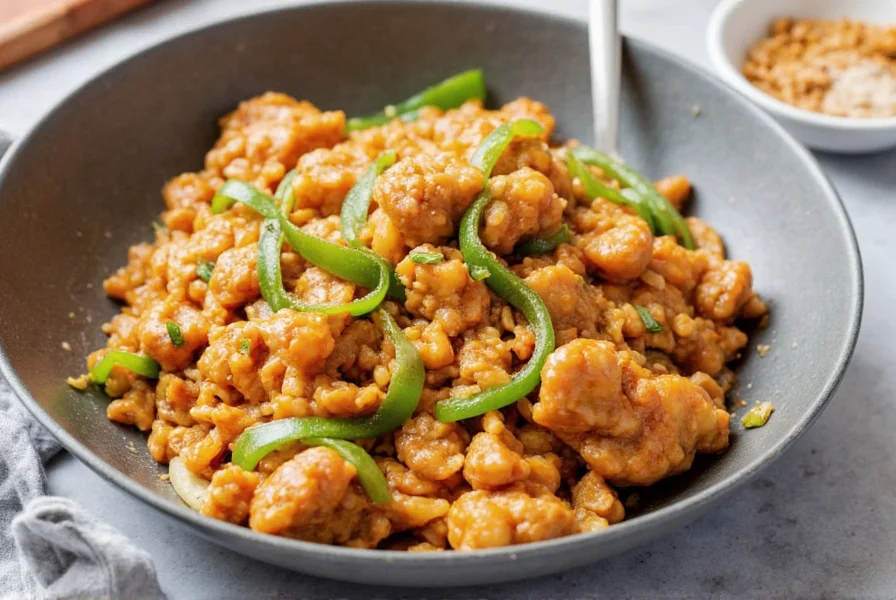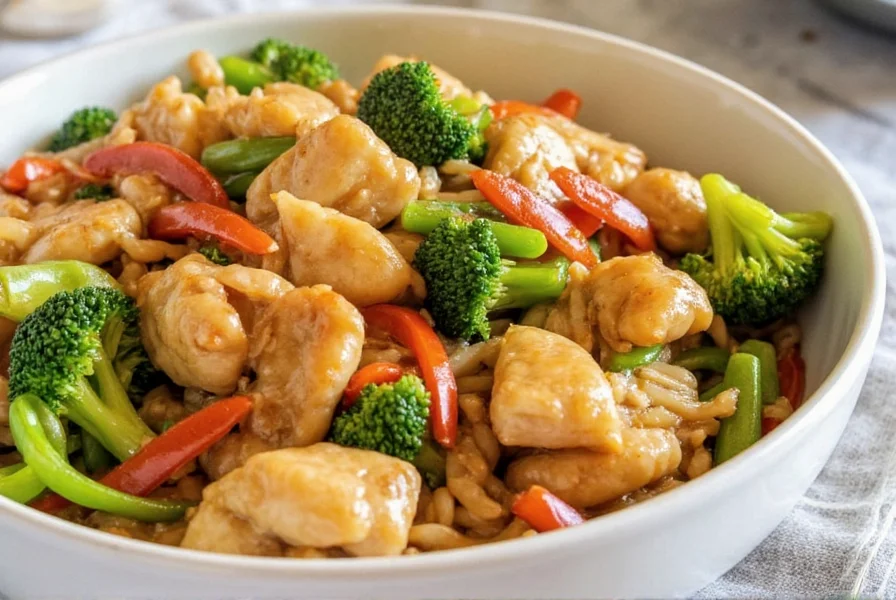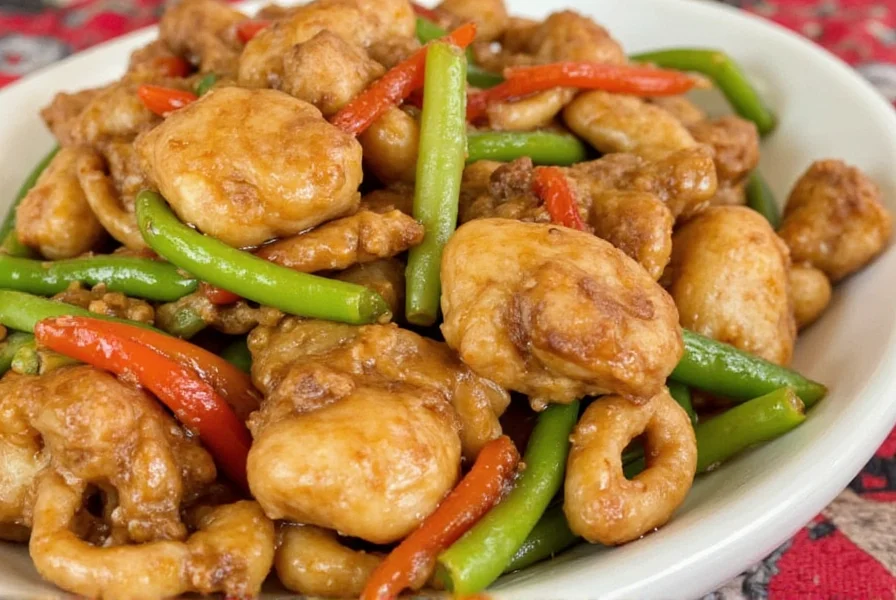The perfect ginger chicken stir fry combines tender chicken, fresh ginger, and a savory-sweet sauce for an authentic Chinese dish ready in under 30 minutes. Key to success is using fresh young ginger, high-heat cooking, and proper cornstarch marination for tender chicken. This classic Cantonese recipe balances ginger's aromatic heat with subtle sweetness and umami flavors.
Creating an authentic ginger chicken stir fry requires understanding the delicate balance of ingredients and technique that defines this beloved Cantonese dish. Unlike Westernized versions loaded with sugar and artificial flavors, the traditional preparation highlights ginger's natural warmth while keeping the chicken succulent and the sauce perfectly balanced. This guide reveals professional techniques that transform simple ingredients into a restaurant-quality meal you can prepare in your home kitchen.
Essential Ingredients for Authentic Flavor
While variations exist across regions, the foundation of a proper ginger chicken stir fry remains consistent. The quality of your ingredients directly impacts the final dish, making selection critical.
| Ingredient | Why It Matters | Pro Tip |
|---|---|---|
| Fresh young ginger | Provides bright, clean heat without bitterness | Look for plump, smooth-skinned ginger with moist fibers |
| Chicken thigh meat | Retains moisture better than breast during high-heat cooking | Cut against the grain into 1-inch pieces for optimal tenderness |
| Shaoxing wine | Essential for authentic flavor depth and aroma | Substitute with dry sherry if unavailable, but avoid vinegar |
| Light soy sauce | Provides umami without overpowering color | Use Chinese brand like Pearl River for best results |
Step-by-Step Preparation Guide
Mastering ginger chicken stir fry requires attention to timing and temperature. Follow these steps for restaurant-quality results:
1. Proper Chicken Preparation
Begin by marinating 1½ pounds of chicken thigh pieces with 1 tablespoon cornstarch, 1 teaspoon Shaoxing wine, and ½ teaspoon baking soda. This "velveting" technique creates a protective layer that keeps chicken tender during high-heat cooking. Let rest for 15-20 minutes while preparing other ingredients.
2. Ginger Selection and Cutting
Use 3-4 ounces of fresh young ginger, peeled and cut into thin matchsticks. Avoid pre-minced ginger from jars, as it lacks the bright, clean flavor of fresh ginger. For optimal texture, slice ginger paper-thin—about 2 inches long and ⅛ inch thick. This "thread ginger" technique maximizes surface area while maintaining pleasant texture.

3. High-Heat Cooking Technique
Heat your wok until smoking hot, then add 2 tablespoons of peanut oil. Cook the chicken in a single layer without overcrowding—this prevents steaming instead of searing. Stir-fry for 90 seconds until just cooked through, then remove. Add more oil if needed, then stir-fry ginger for 30 seconds until fragrant but not browned. Return chicken to wok, add sauce, and toss for 60 seconds until glossy.
Avoiding Common Ginger Chicken Stir Fry Mistakes
Even experienced home cooks make these critical errors that compromise authentic flavor and texture:
- Using old, fibrous ginger - Mature ginger becomes woody and bitter. Young ginger has thinner skin and more moisture.
- Overcrowding the wok - This drops temperature dramatically, causing chicken to steam rather than sear.
- Adding sauce too early - Sugar in the sauce burns at high temperatures. Add during final tossing.
- Using chicken breast exclusively - Thigh meat's fat content prevents drying during quick cooking.
Serving Suggestions for Complete Meal
Ginger chicken stir fry traditionally serves as part of a multi-dish Chinese meal. Pair with:
- Steamed jasmine rice or Chinese black rice
- Simple vegetable side like bok choy or snow pea shoots
- Light soup such as hot and sour or egg drop
For presentation, serve in a warm bowl with chicken arranged to showcase the glossy sauce and vibrant ginger threads. Garnish with thinly sliced scallions for color contrast. The ideal ginger chicken stir fry should have a beautiful amber sauce that clings to the chicken without pooling at the bottom of the dish.
Storage and Reheating Tips
While best enjoyed fresh, properly stored ginger chicken stir fry maintains quality for 2-3 days. Cool completely before transferring to an airtight container. When reheating, use a wok or skillet rather than microwave to preserve texture:
- Add 1 teaspoon oil to preheated wok
- Stir-fry leftovers over medium-high heat
- Add 1 tablespoon water or broth to recreate steam
- Cook for 2-3 minutes until heated through
Avoid reheating multiple times, as this degrades texture. The cornstarch-based sauce may thicken upon cooling—add a splash of water during reheating to restore proper consistency.

Frequently Asked Questions
Can I use ground ginger instead of fresh in stir fry?
No, ground ginger lacks the bright, clean flavor and textural element of fresh ginger. Ground ginger has a more concentrated, earthy flavor that doesn't provide the same aromatic quality. For authentic ginger chicken stir fry, fresh young ginger is essential—substituting ground ginger creates a completely different dish.
Why is my chicken tough in ginger stir fry?
Chicken becomes tough when overcooked or not properly marinated. Ensure you use the cornstarch and baking soda marinade for at least 15 minutes before cooking. Cook over high heat for no more than 90 seconds per batch, and avoid overcrowding the wok. Chicken thigh meat naturally stays more tender than breast during quick cooking methods.
What's the difference between ginger chicken and sesame chicken?
Ginger chicken features fresh ginger as the dominant flavor with a light, savory sauce, while sesame chicken uses a sweet, thick sauce with sesame seeds. Ginger chicken is typically stir-fried quickly at high heat with minimal sauce, whereas sesame chicken often involves deep-fried chicken in a heavier, sweeter sauce. Authentic ginger chicken contains no sugar in the sauce, relying on natural umami flavors.
How can I make ginger chicken stir fry healthier?
Reduce oil by using a well-seasoned carbon steel wok or non-stick pan. Increase vegetable content by adding bell peppers, broccoli, or snow peas. Use reduced-sodium soy sauce and eliminate added sugar. For lower calories, increase the ginger-to-sauce ratio and serve with cauliflower rice instead of white rice while maintaining authentic flavor profile.











 浙公网安备
33010002000092号
浙公网安备
33010002000092号 浙B2-20120091-4
浙B2-20120091-4